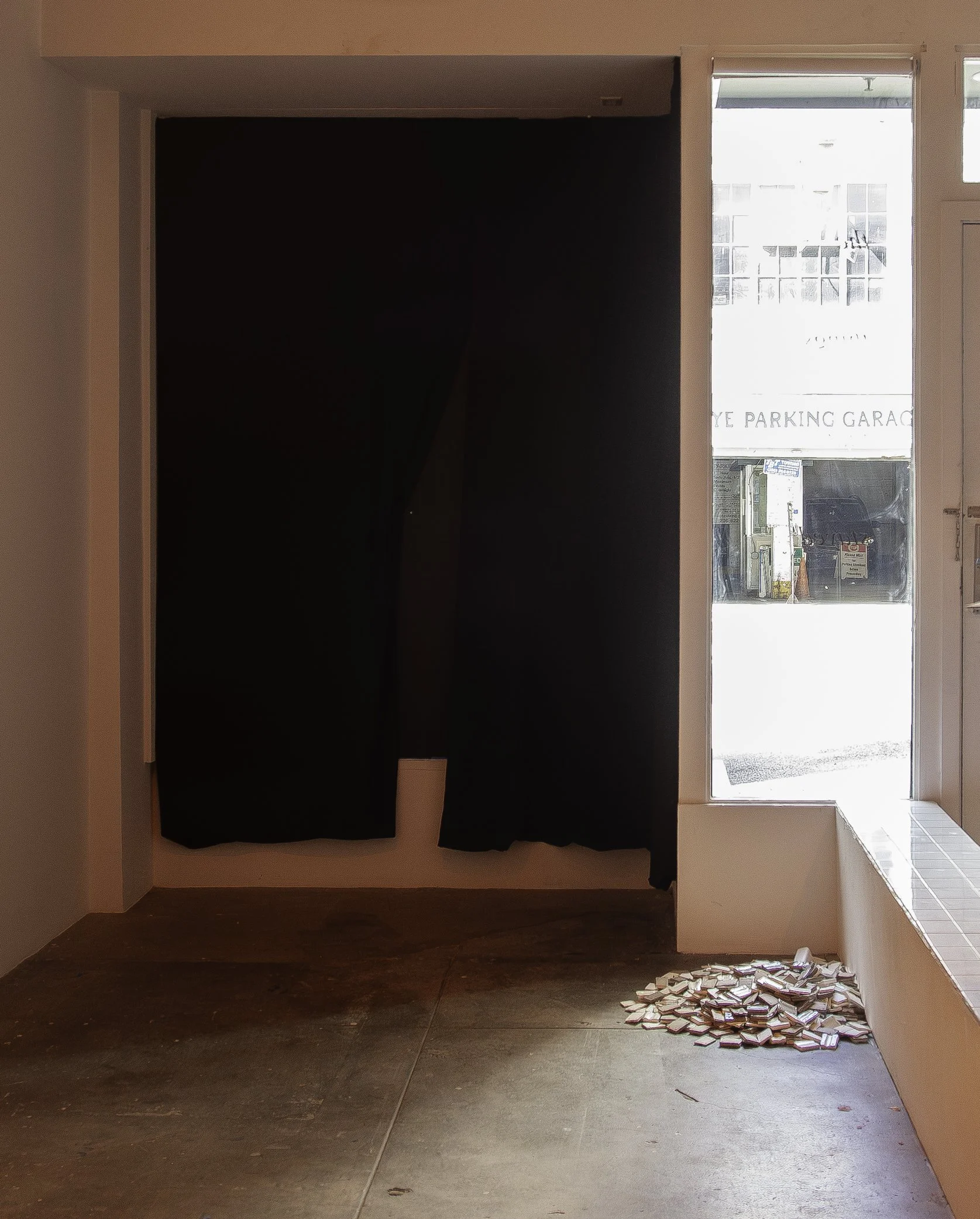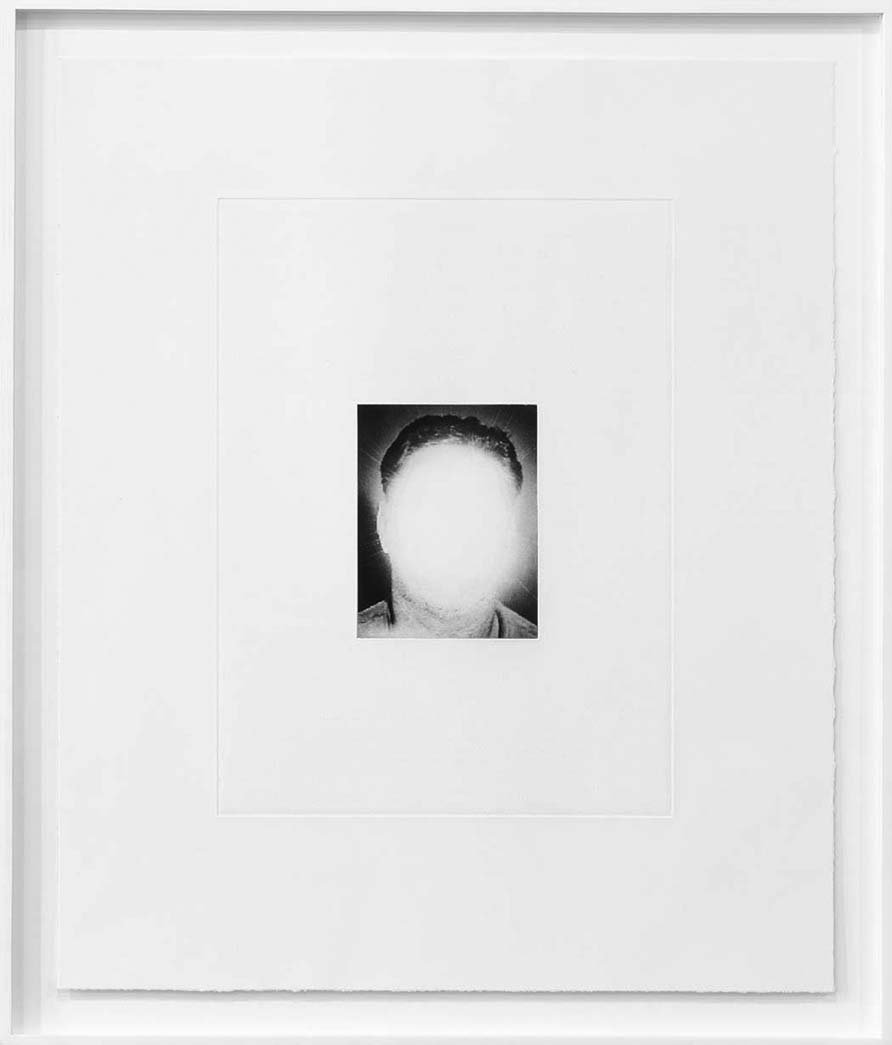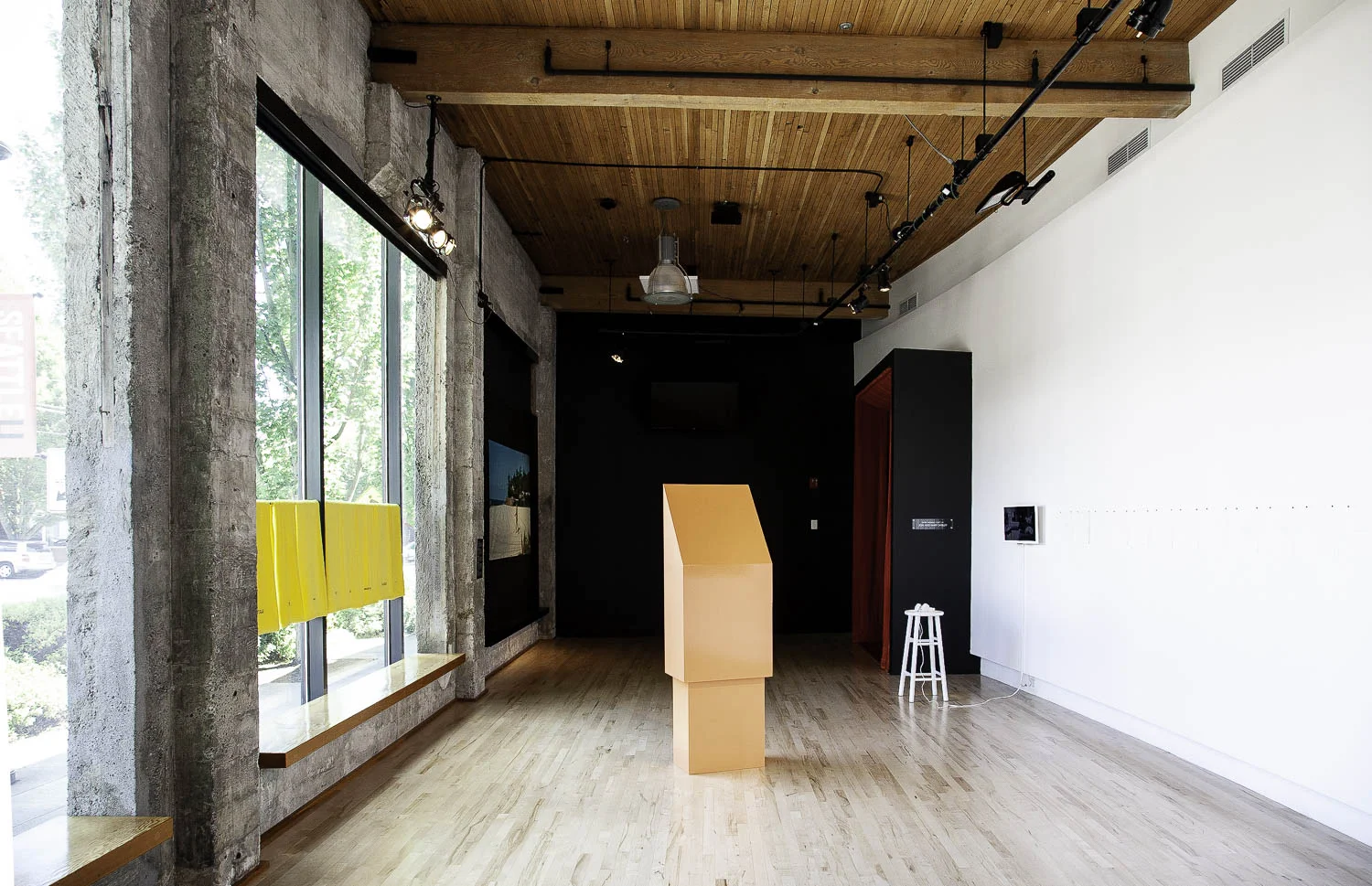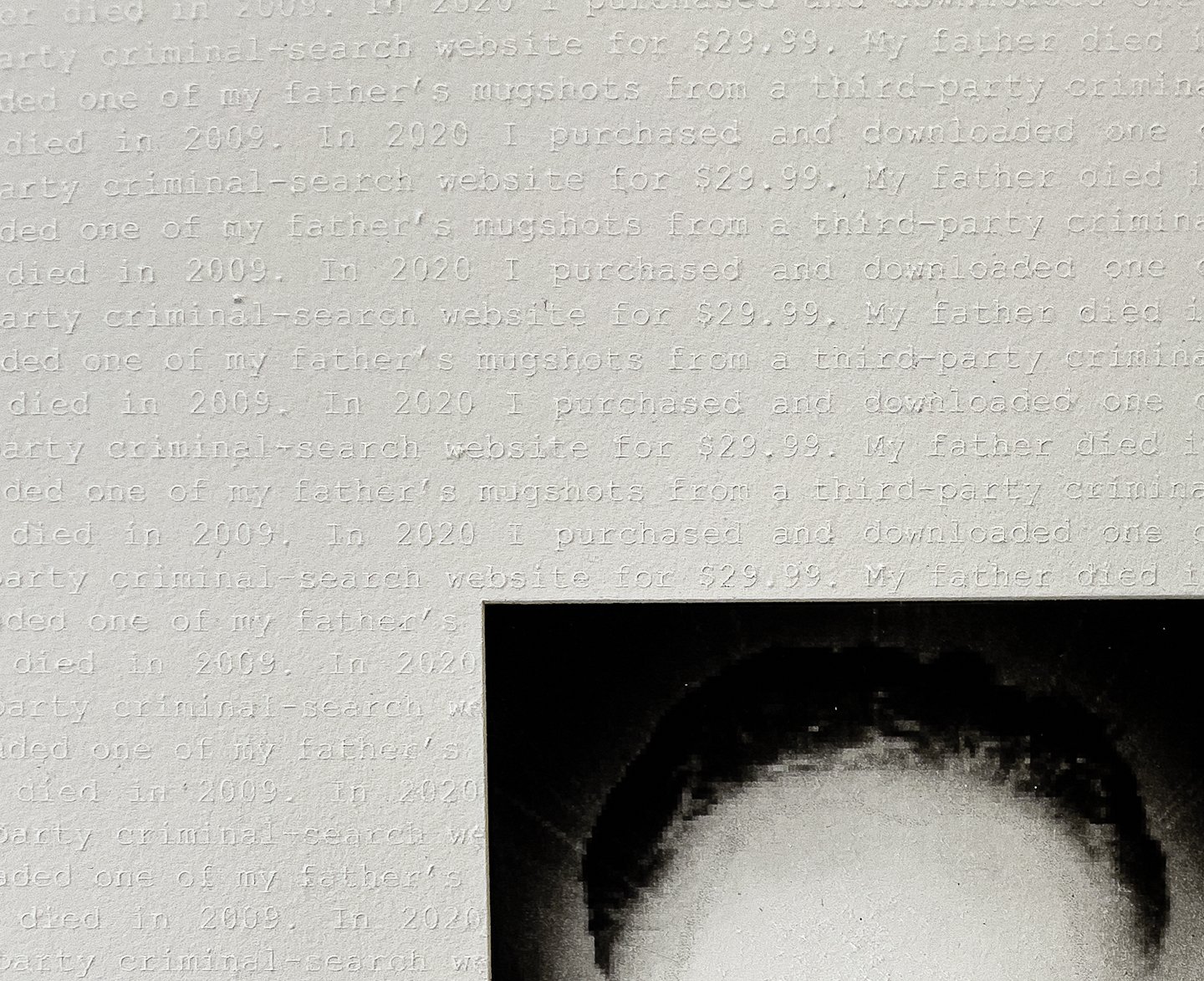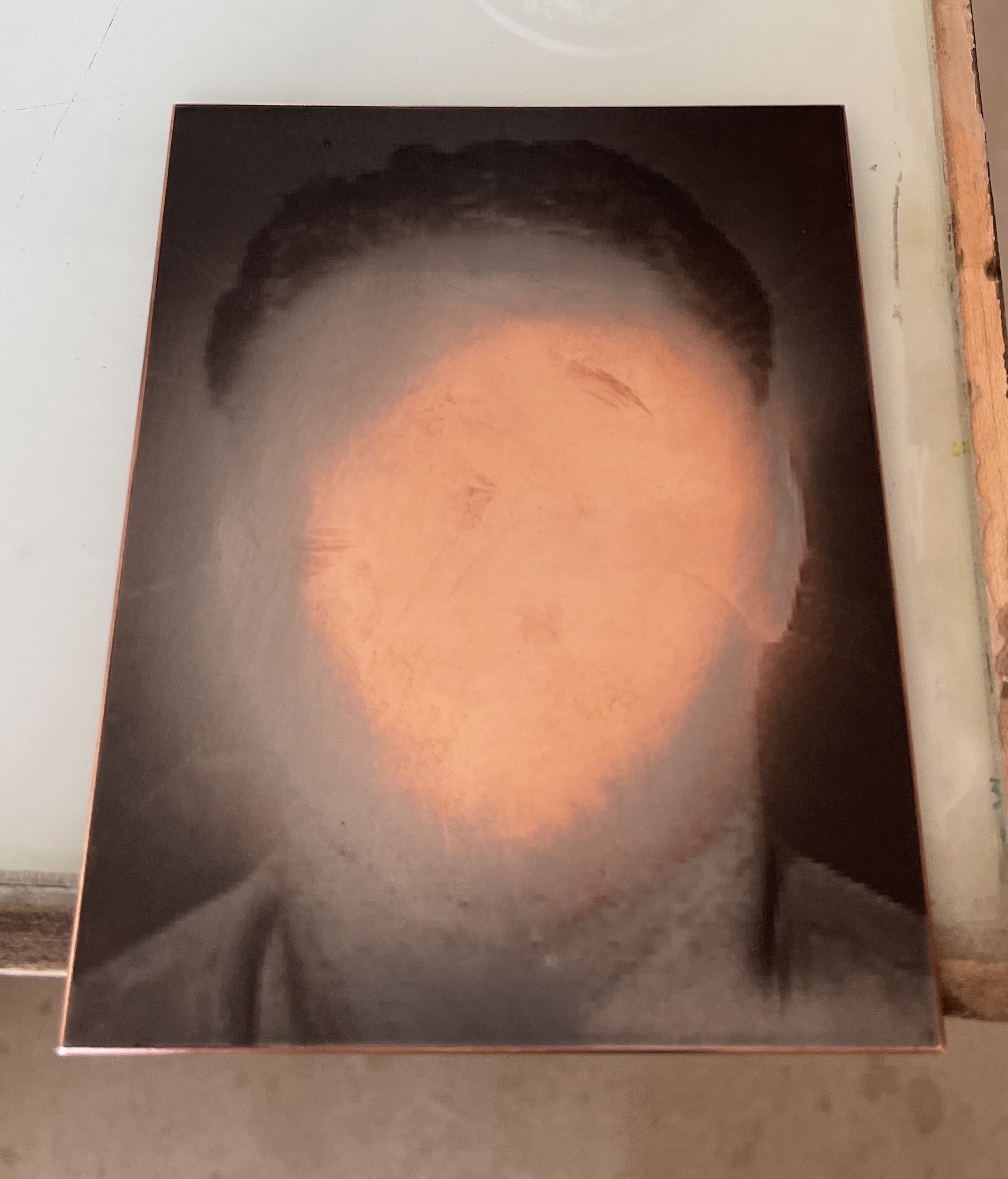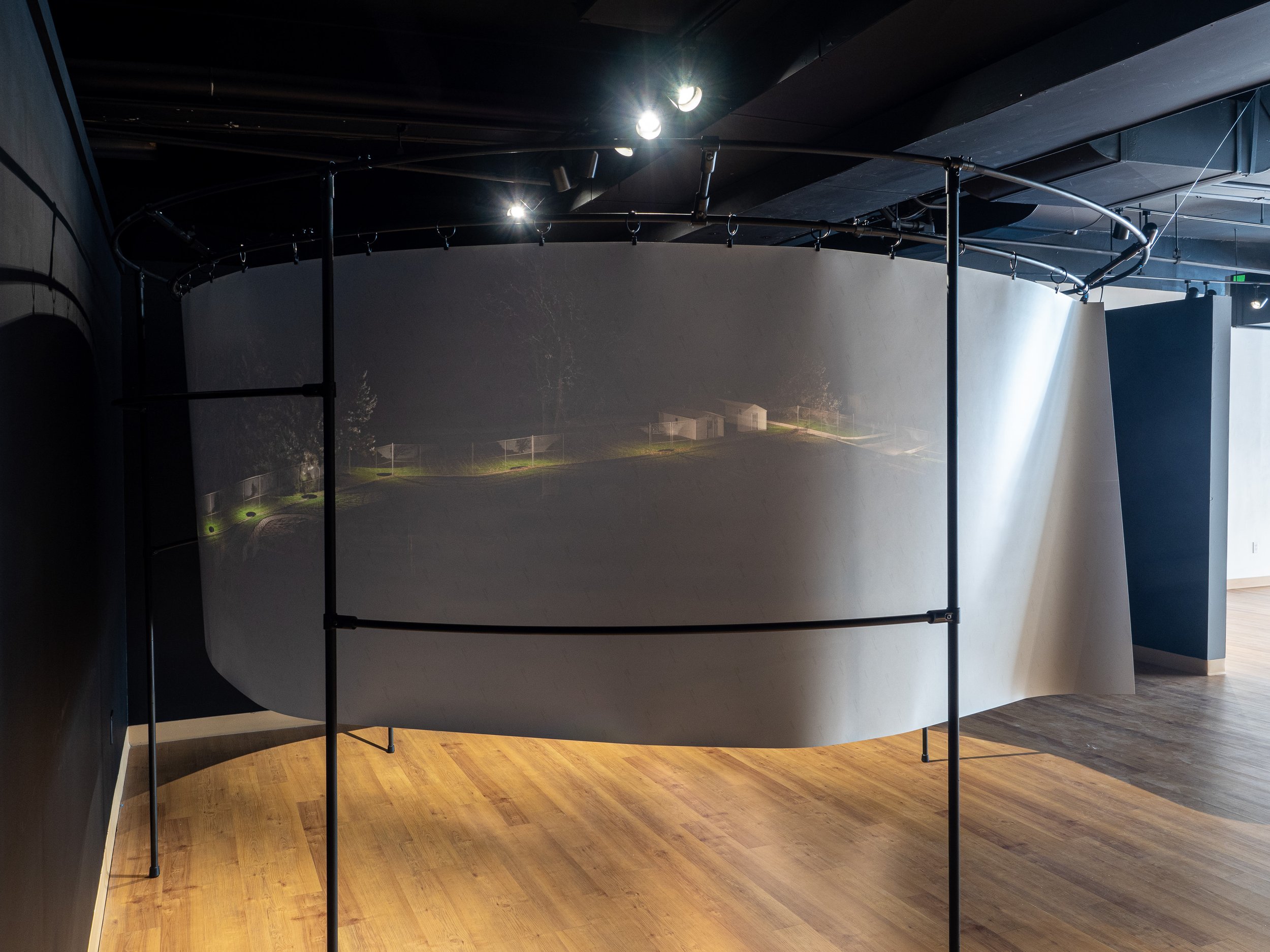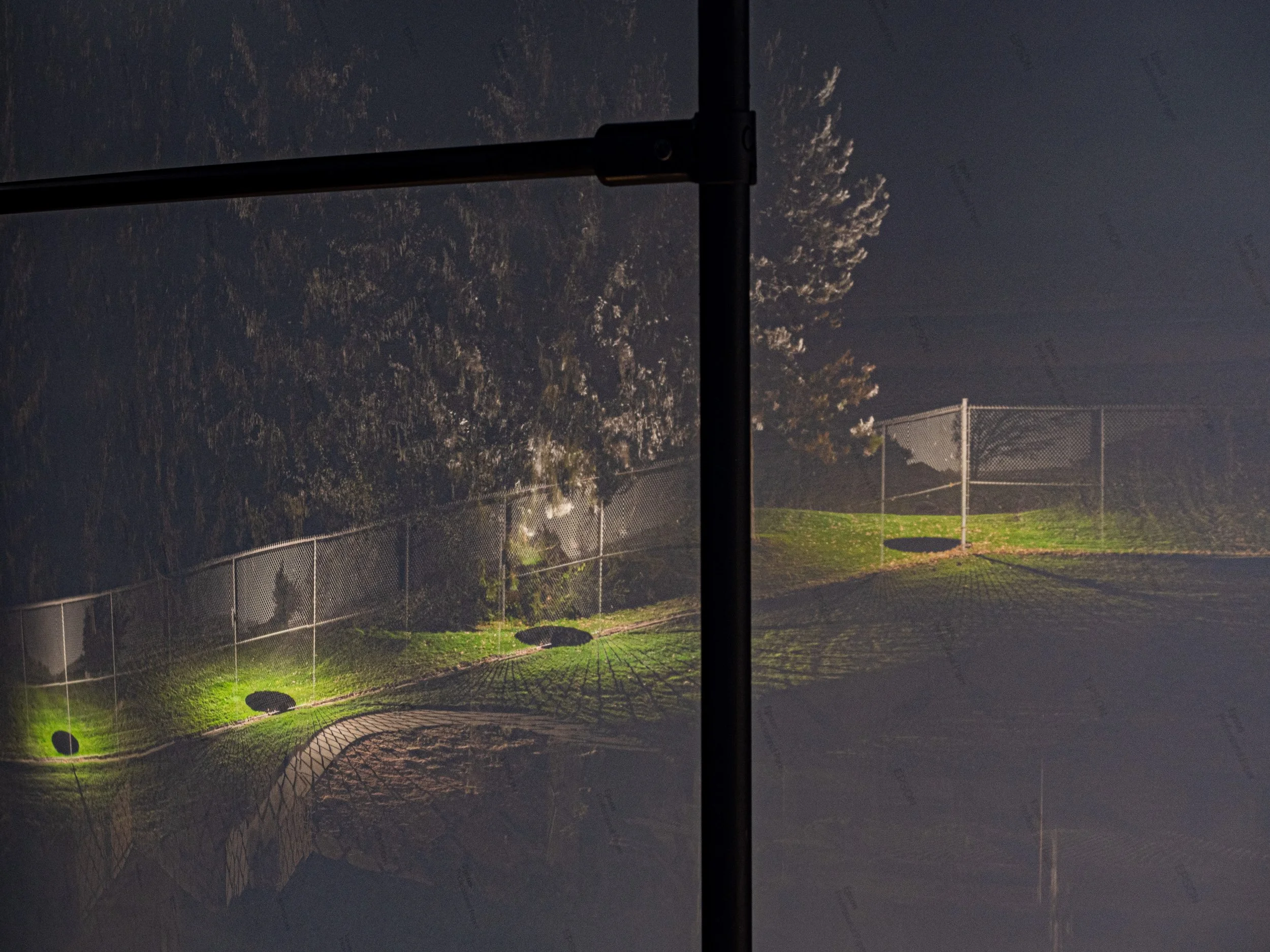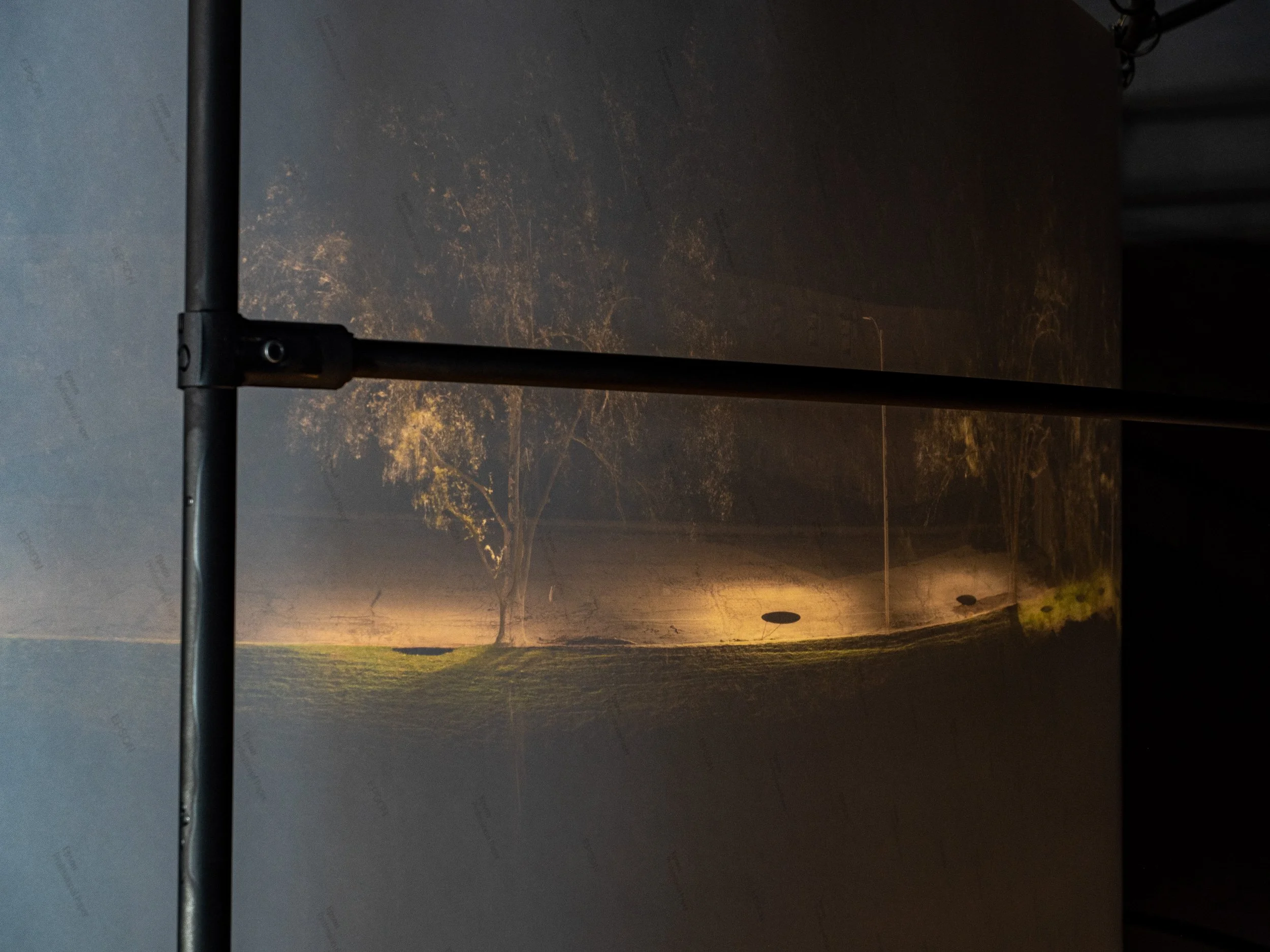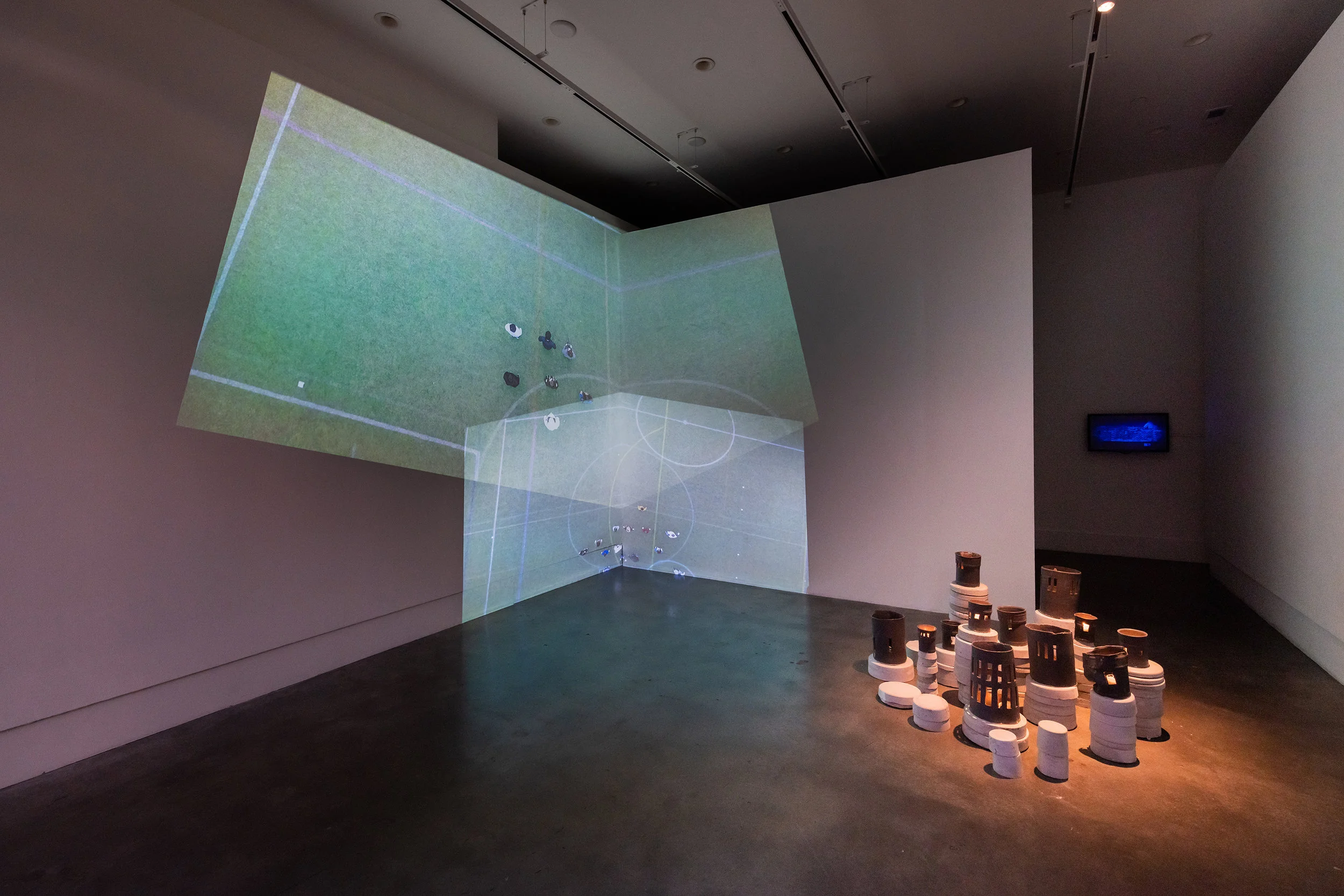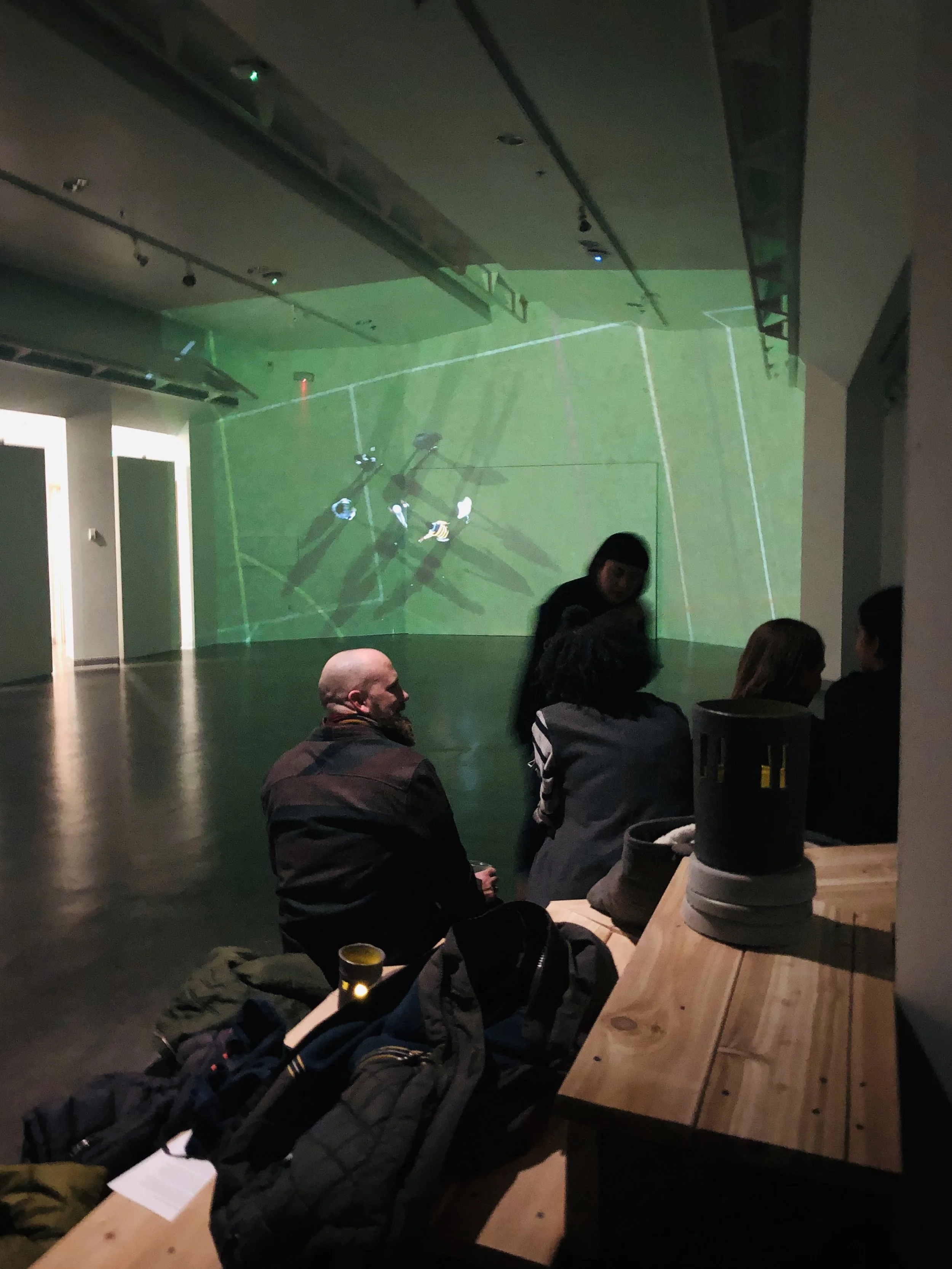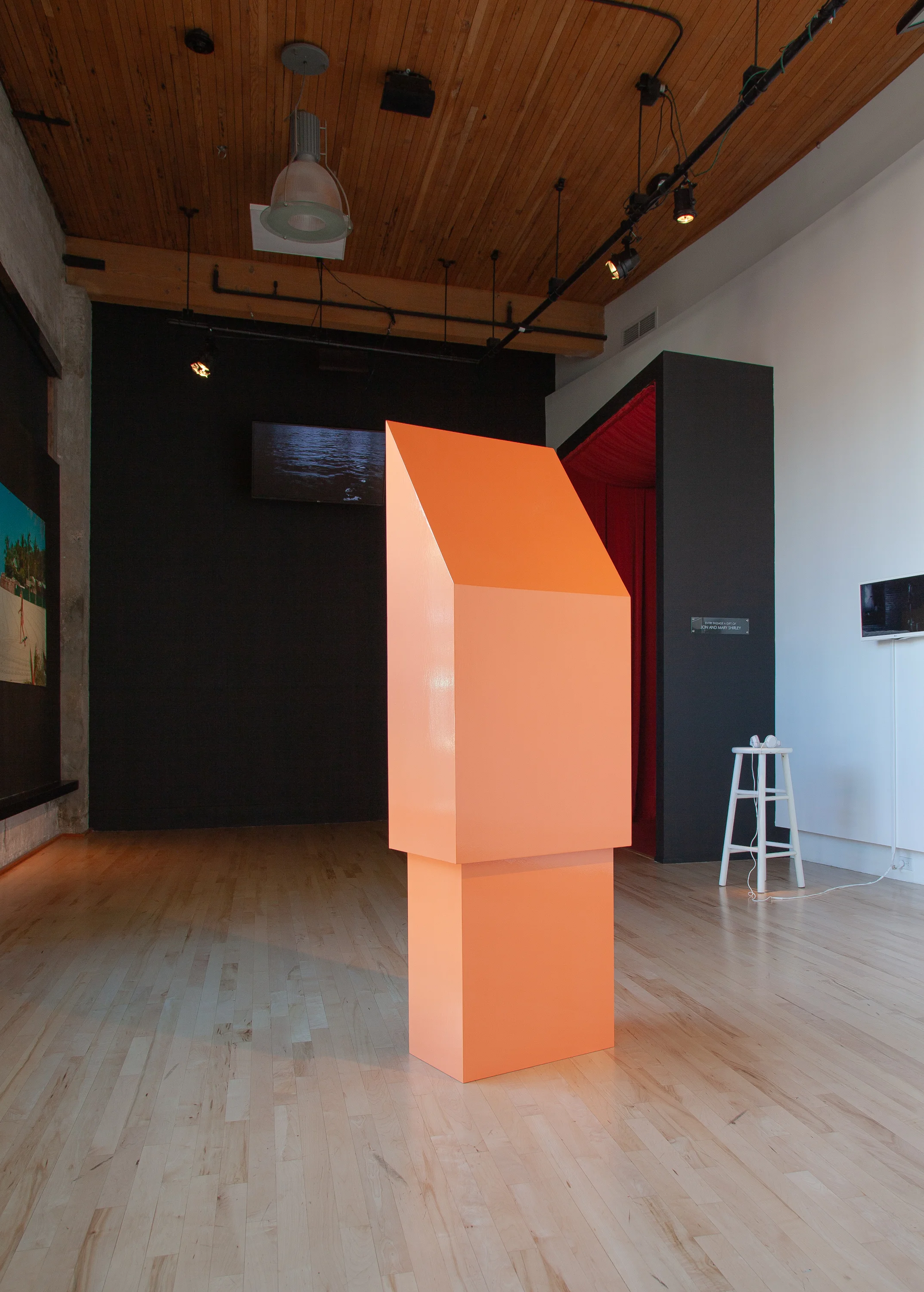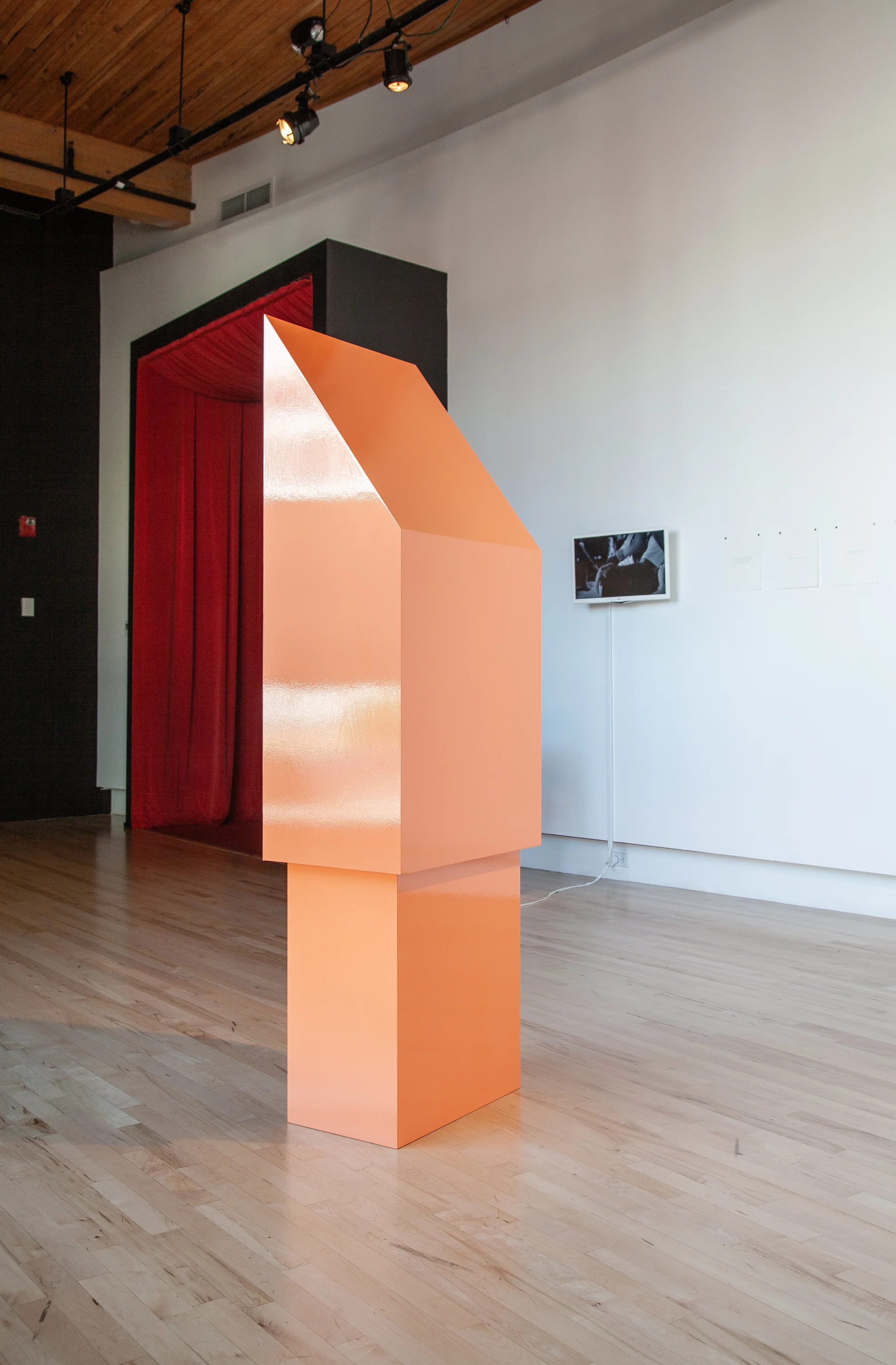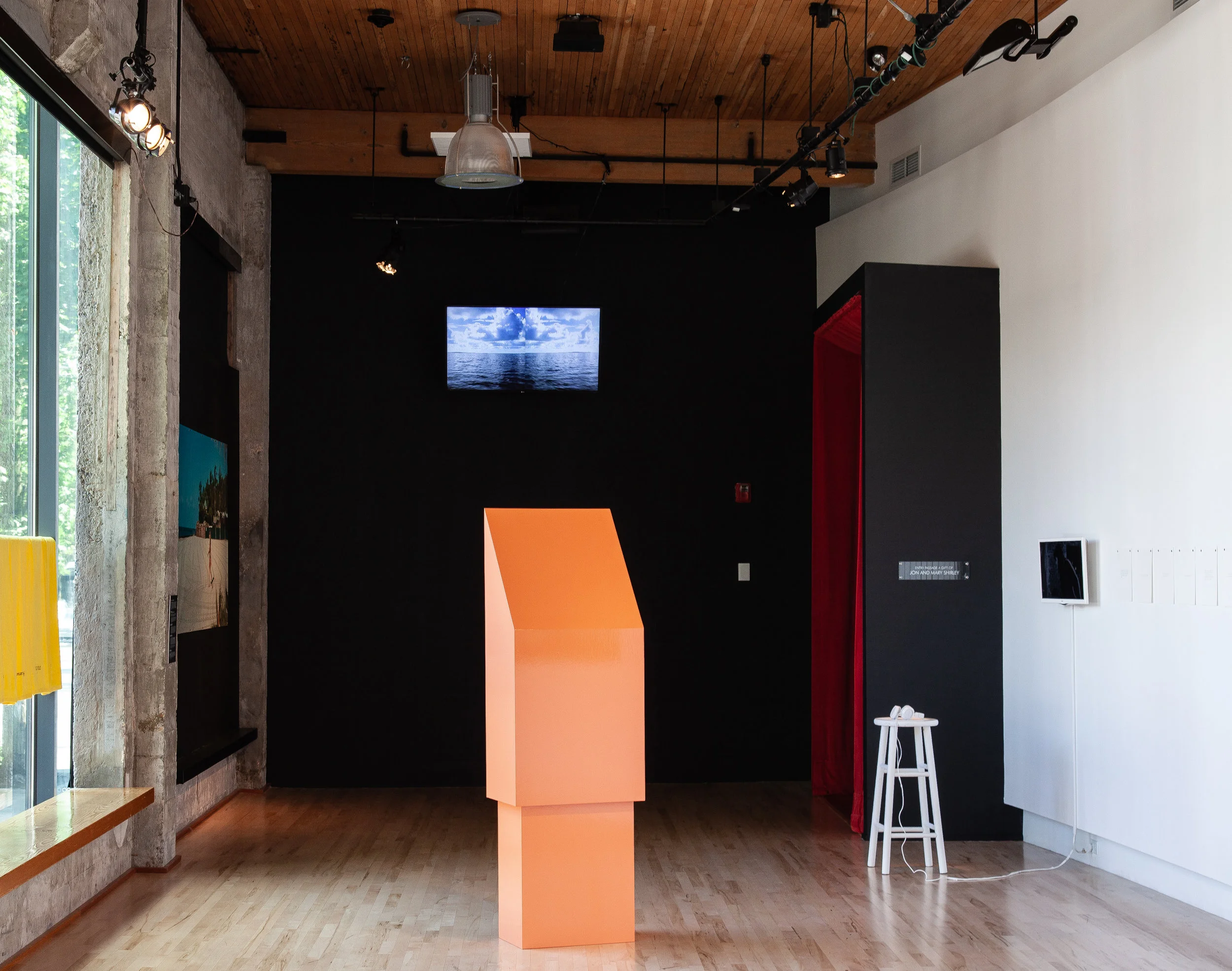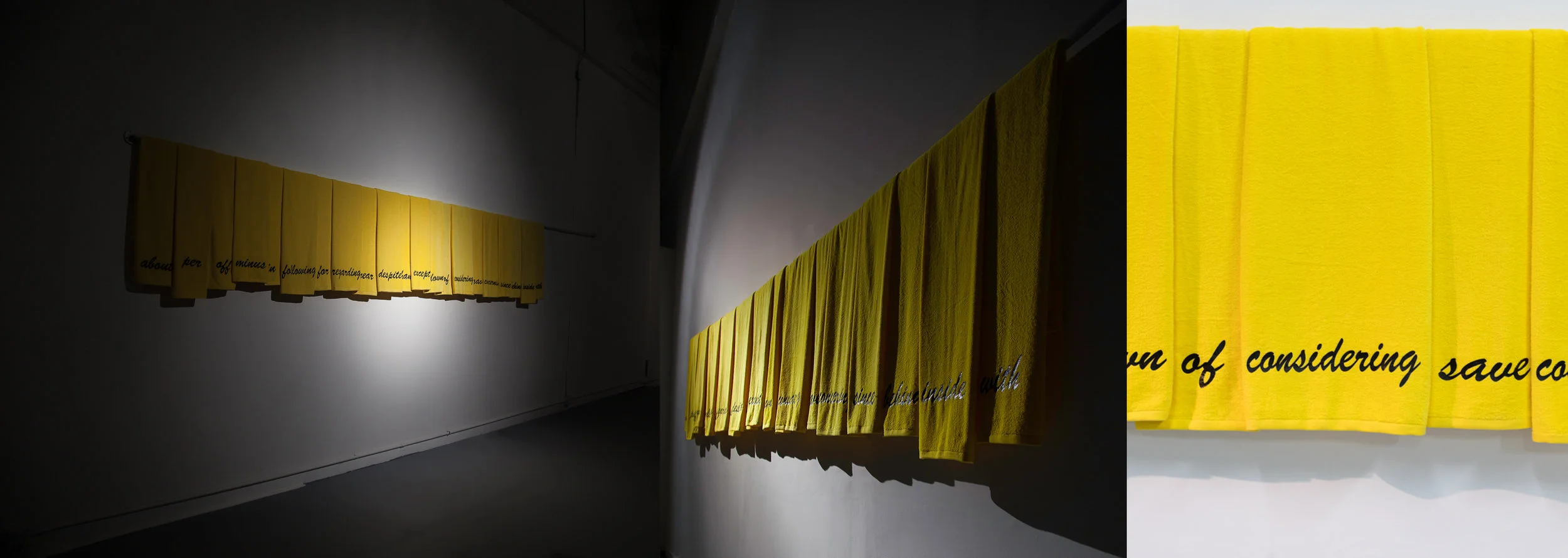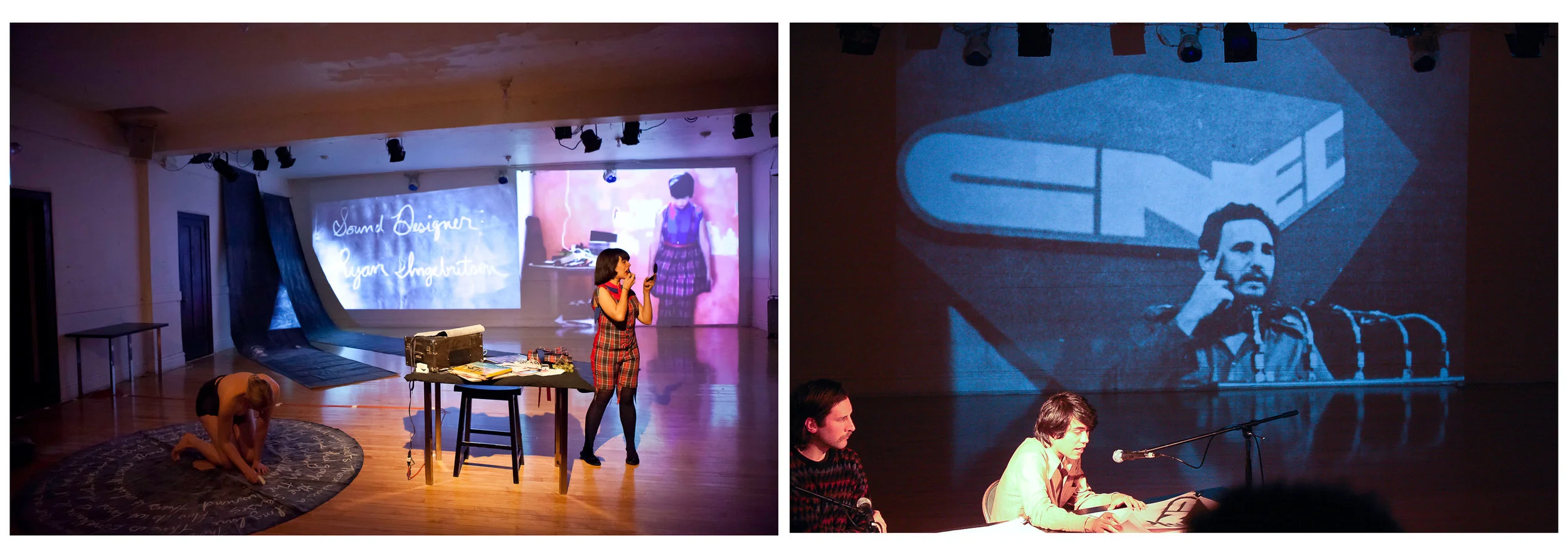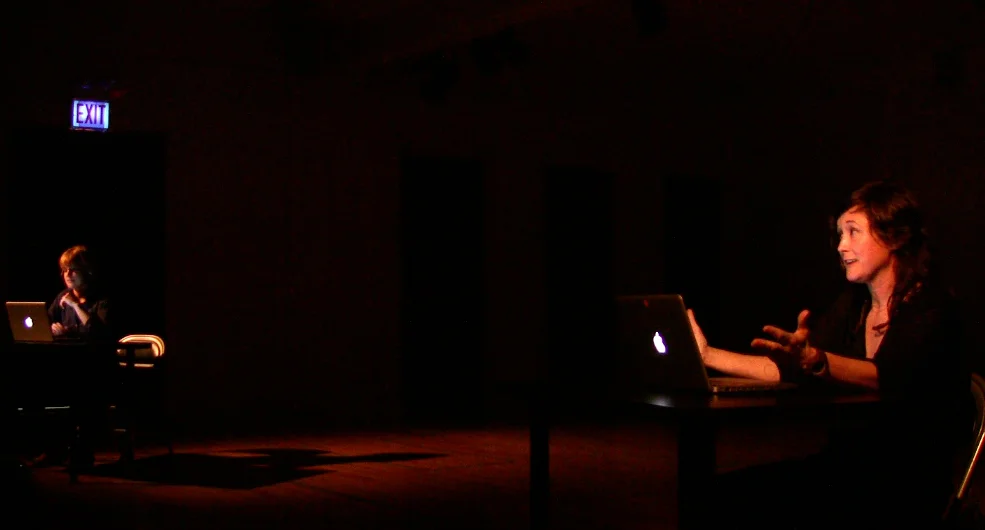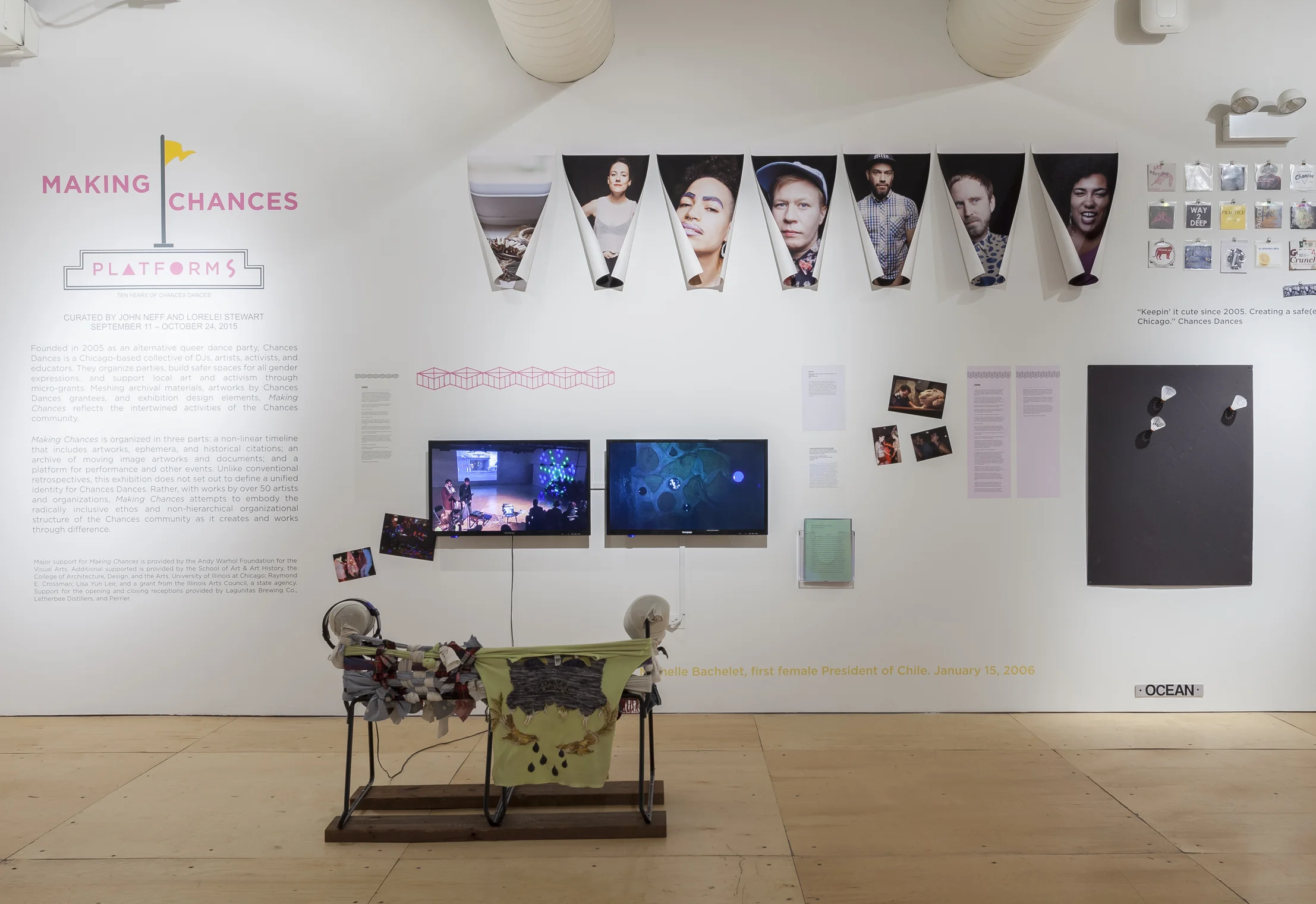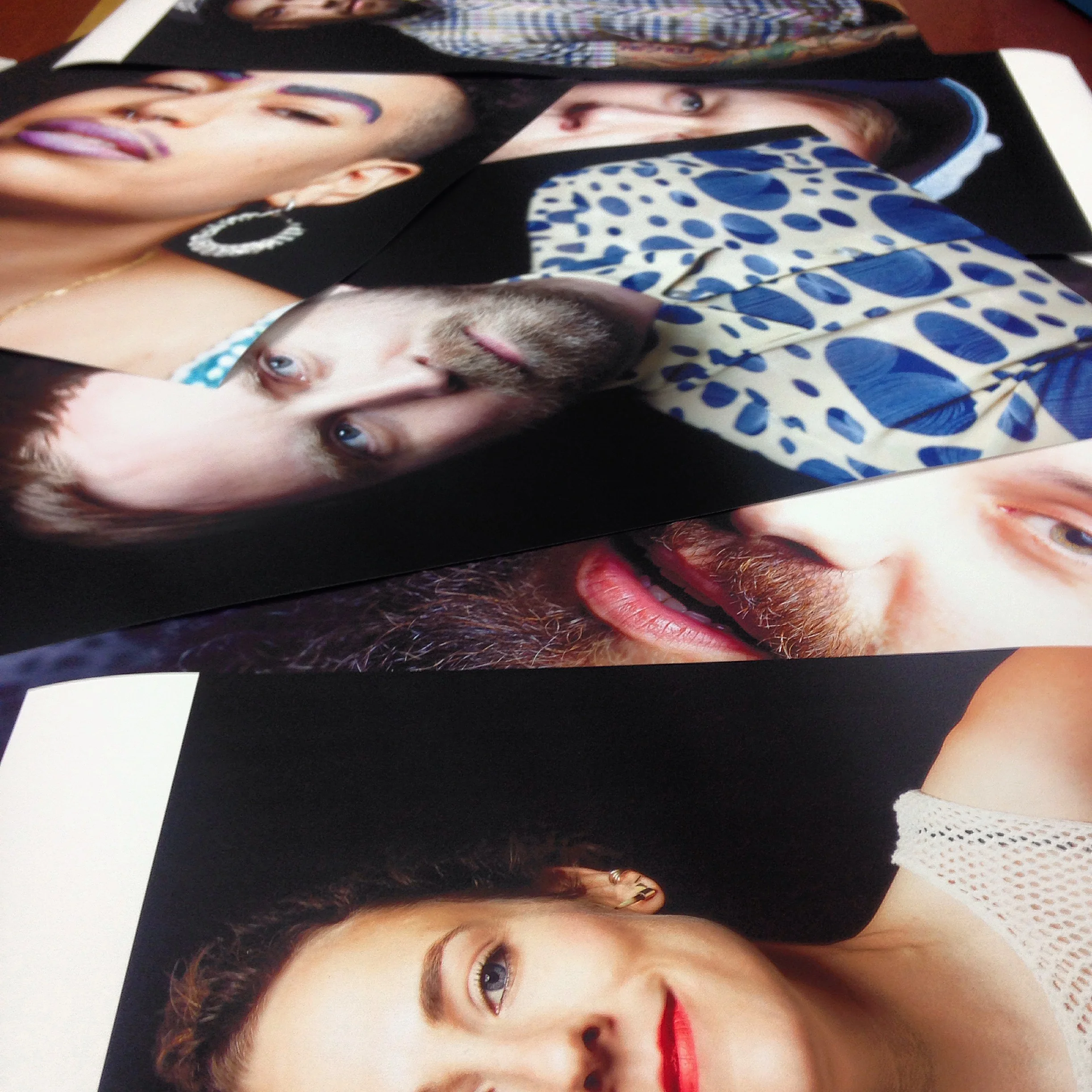Monument a Surface Exhibition essay
A tanned bikini-clad woman walks across a newly raked beach, a surface more scrubbed up than zen. With its blue sky, bluer water, palm trees, and pristine sand, Higgs Beach is the stuff of tourist posters, and through Monument a Surface, viewers encounter Dan Paz’s saturated color photograph at the scale of a large wall mural. Yet, what might advertise a dreamy tropical destination is instead offered up—as the photograph’s title indicates—for its historical imbrication as the site of the African Cemetery in Key West, Florida (2018), a burial site for enslaved Africans who died in transport and after their arrival to the Key in the late spring of 1860. A trio of slave ships intercepted on their way to Cuba[1]—the Wildfire, the William, and the Bogotà—brought close to 1,500 West and Central Africans to the region. Those who did not survive transport or died after arrival were buried below the sands at Higgs Beach and largely forgotten until work spearheaded by a local historian in the 1990s revived the story.[2] An official memorial is now located near this site.
Relaying details from a Floridian newspaper, a New York Times article from June 2, 1860 reported “affecting scenes among the negroes” rescued from the slave ships, including joyous reunions, delight and awkwardness in new encounters, and painful realities of death and grief. Addressing the “Wildfire’s cargo,” the article describes a particular “object of interest,” a mother tending to an infant upon arrival but whose child died soon after at a mere six weeks old. Recounting the scenes of mourning, the author writes:…as we saw the mother bending and weeping, and kissing its inanimate form—wailing in plaintive song, and responded to by numerous mourners around the corpse—we felt that love was beyond all conditions of pride or place, and that many might rejoice and be flattered in their self-love, if they would be missed as much as the dead babe was by its mother. It was laid in a handsome coffin, and a procession of seventeen went with it to its last abode. Low chauntings [sic] and loud wails of grief would break forth, and when at last the spot was reached, they became as silent as the narrow house which would contain all the heart prized so much. The little coffin was placed in the grave, each threw in its handful of earth, and amid the deepest sorrow they returned in silence back.[3]
* * *
130 years later.
Leslie Wilson is Assistant Professor of Art History at SUNY Purchase where her work focuses on the global history of photography, modern and contemporary art from Africa and the African diaspora, American art post-1900, and museum studies. Her current project charts the development and popularization of color photography in South Africa, from its inception in the early twentieth century to contemporary practice. She has held curatorial internships at the Art Institute of Chicago, Contemporary Art Museum St. Louis and the St. Louis Art Museum. From 2015 to 2017, she was a 24-Month Chester Dale Predoctoral Fellow at the Center for Advanced Study in the Visual Arts at the National Gallery of Art in Washington, DC.
[1] The United States officially banned the maritime slave trade—in concert with Great Britain, France, Portugal, and Spain—in 1820.
[2] Key West historian Gail Swanson initiated identification and recognition of the Slave Cemetery in 1990. In the early 2000s, under the auspices of the Mel Fisher Maritime Museum, local archaeologists, including Corey Malcolm with whom Paz talked at length, worked to pinpoint the exact location of the burials. “Story of Discovery,” African Cemetery at Higgs Beach (2013). https://www.africanburialgroundathiggsbeach.org/discovery
[3] “The Africans at Key West.” New York Times. June 2, 1860. ProQuest Historical Newspapers.
